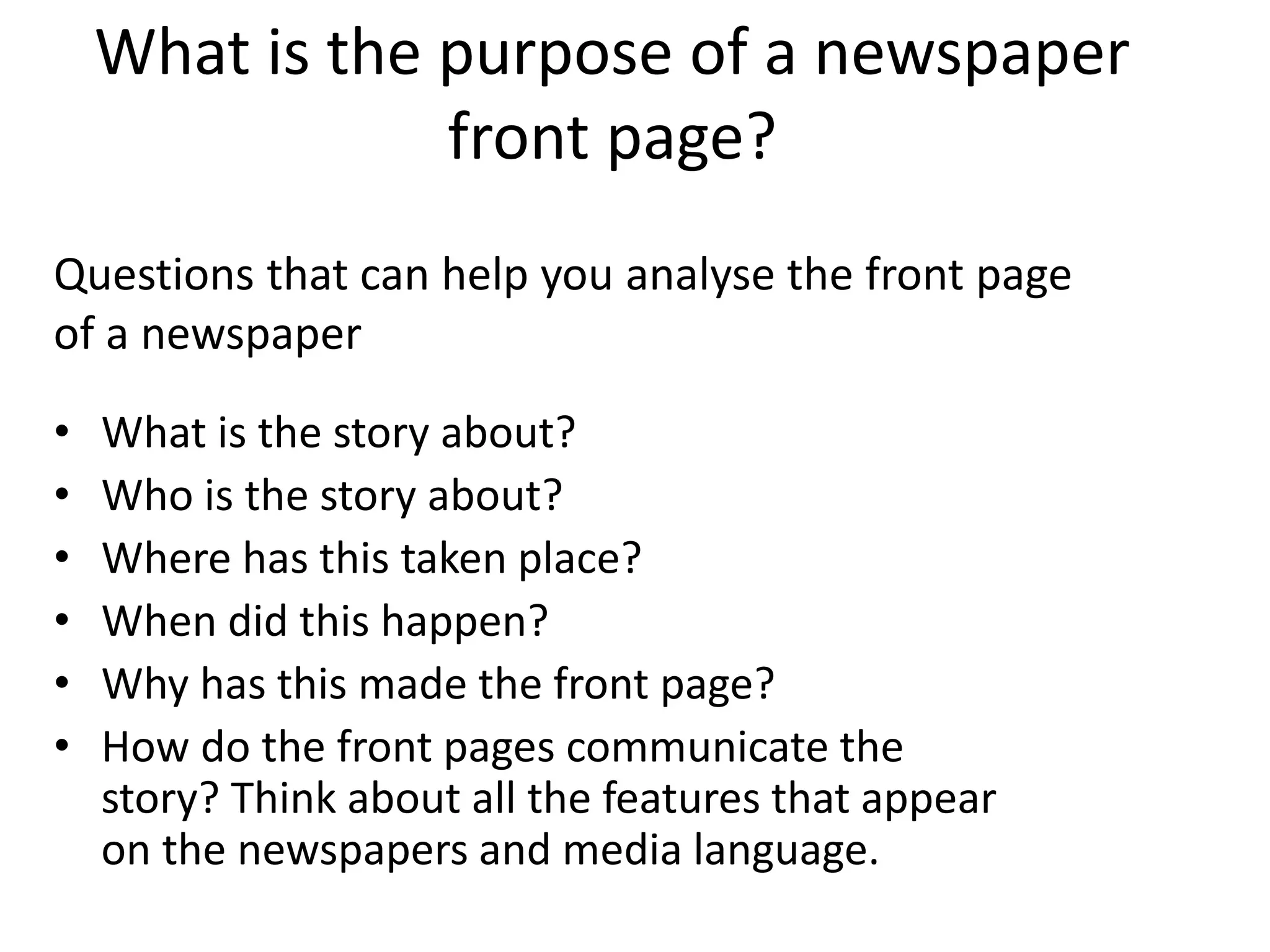This document provides an introduction and overview of studying newspapers for a media course. It outlines the focus areas and tasks for two sections - Section A on media language and representation, and Section B on media industries and audiences. For each section, it lists the newspapers and pages students need to study. It then provides a list of major UK newspapers and describes their typical tabloid or broadsheet format. The final sections define these formats in more detail and provide examples of UK newspapers that fall into each category. The document serves to introduce students to the key concepts and newspapers they will analyze for the course.






















![Potential Exam Question
Answer the following exam style question
• How does the code and conventions create meaning [15]
Choose one of the following front pages](https://image.slidesharecdn.com/newspaperintro-studentversion-190513114133/75/Introduction-to-Newspapers-student-version-23-2048.jpg)
































